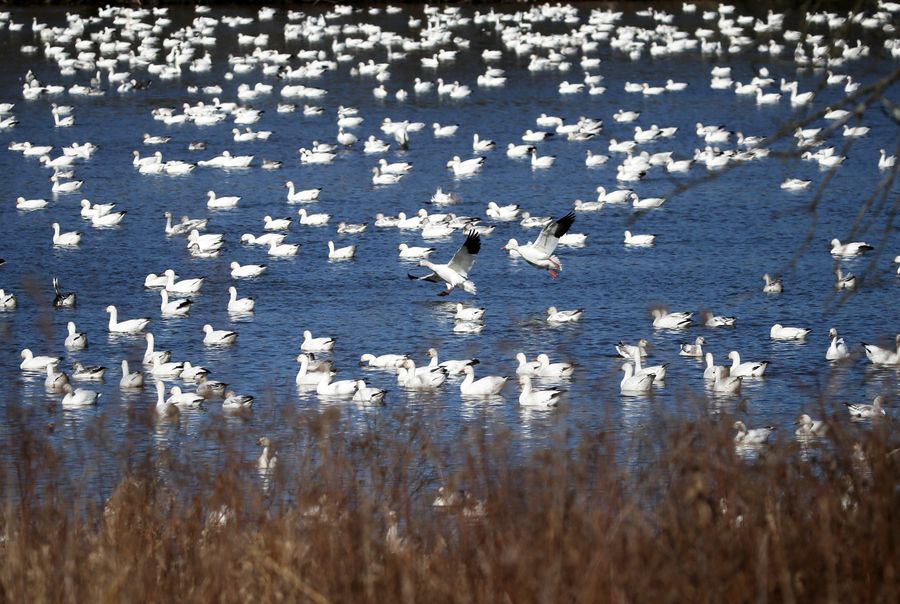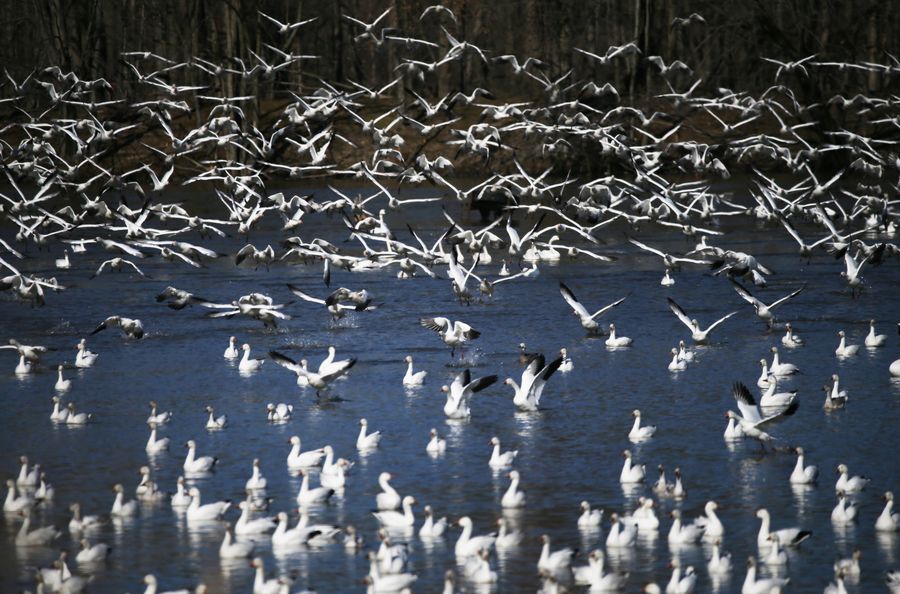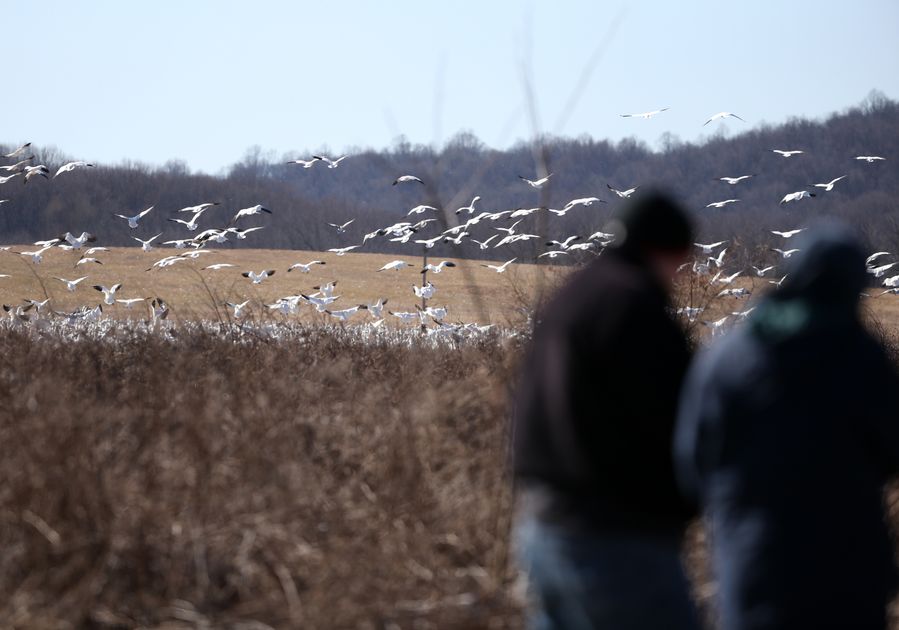
Snow geese are seen at the Middle Creek Wildlife Management Area in Lancaster County, Pennsylvania, the United States, on Feb. 22, 2020. (Xinhua/Qin Lang)
"We usually tell people the peak is around mid February to mid March. Historically, it was more into April. But it seems like it's getting earlier," Lauren Ferreri at Middle Creek said. "It just depends on the weather. We've had a very mild winter."
NEW YORK, Feb. 23 (Xinhua) -- Thousands of bird viewers swarmed to the Middle Creek Wildlife Management Area in Lancaster County of the U.S. state of Pennsylvania on Saturday to watch migrating snow geese.
The nearly 400 acres of water surface at Middle Creek was densely covered with waterfowls, mainly white colored snow geese, estimated to be over 100,000, and a few thousand tundra swans and Canada geese.
From time to time the snow geese would take off in massive flocks from the lake to blot out the sky. What could be heard at the time were loud honks of the vocal birds and continuous camera shutters at the observation point. In a few minutes, the birds would land again on the water.
It's the annual revelry for bird viewers, but came earlier this year, according to Lauren Ferreri, visitor and biological manager at Middle Creek. She said snow geese showed up at about mid January this year, a little bit earlier than usual.

Snow geese are seen at the Middle Creek Wildlife Management Area in Lancaster County, Pennsylvania, the United States, on Feb. 22, 2020. (Xinhua/Qin Lang)
"We usually tell people the peak is around mid February to mid March. Historically, it was more into April. But it seems like it's getting earlier," she said in an interview with Xinhua on Saturday. "It just depends on the weather. We've had a very mild winter."
She said although the migration is different each year, over time it's becoming a trend to be earlier. "It's really based on weather patterns. The snow geese really like to have an ice-free lake and snow-free fields."
Ferreri said she has been working at Middle Creek since 2016 and noticed that as Middle Creek winters are constantly milder, there have been no hard freezes or large snow events, and no major snow storms for the past few years.
"If you track migrations over time with the snow geese, they are becoming earlier and earlier," she said. "We've noticed the trends."
The birds are trying to adjust themselves to be flexible around those weather changes, she said.

People watch snow geese at the Middle Creek Wildlife Management Area in Lancaster County, Pennsylvania, the United States, on Feb. 22, 2020. (Xinhua/Qin Lang)
According to Ferreri, climate change may endanger many wild life species, but it seems to be the opposite for snow geese. In the 1900s, the population of snow geese was as low as 2,000 or so, and now the estimated number is 10 to 20 million in North America.
"It seems they are reaching a point of overpopulation," she said.
According to the Pennsylvania Game Commission's website, hunting has been used as a way to bring down the number of snow geese, with 1 million to 1.5 million birds harvested annually in the state.
"When snow geese populations are too large, the birds' feeding can destroy their own habitat, which is also used by other species," it says.

Lauren Ferreri, visitor and biological manager at Middle Creek, is interviewed by Xinhua at the Visitors Center of the Middle Creek Wildlife Management Area in Lancaster County, Pennsylvania, the United States, on Feb. 22, 2020. (Xinhua/Qin Lang)
Apart from climate change, the major concerns are the declining of waterfowl habitat and the related ecosystems, as well as pollution in major habitat areas in the world, Ferreri said.
Education and regulation are the two most effective methods to maintain a healthy wildlife balance, she added.
Middle Creek only serves as a roost for the snow geese, where they stay for some time waiting for the weather to warm up in the north. Their destinations are the areas in and around the Arctic, where they will hatch their goslings. When next winter comes, they will embark on a journey south and repeat the annual migration. ■



